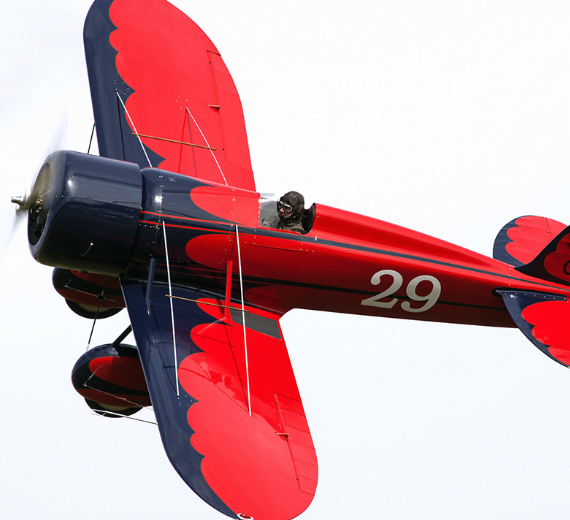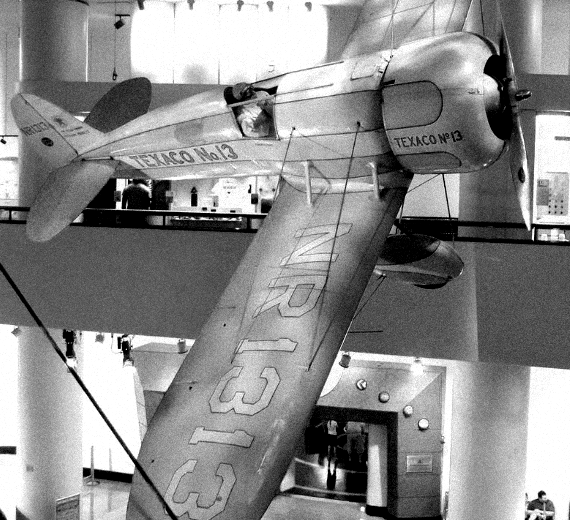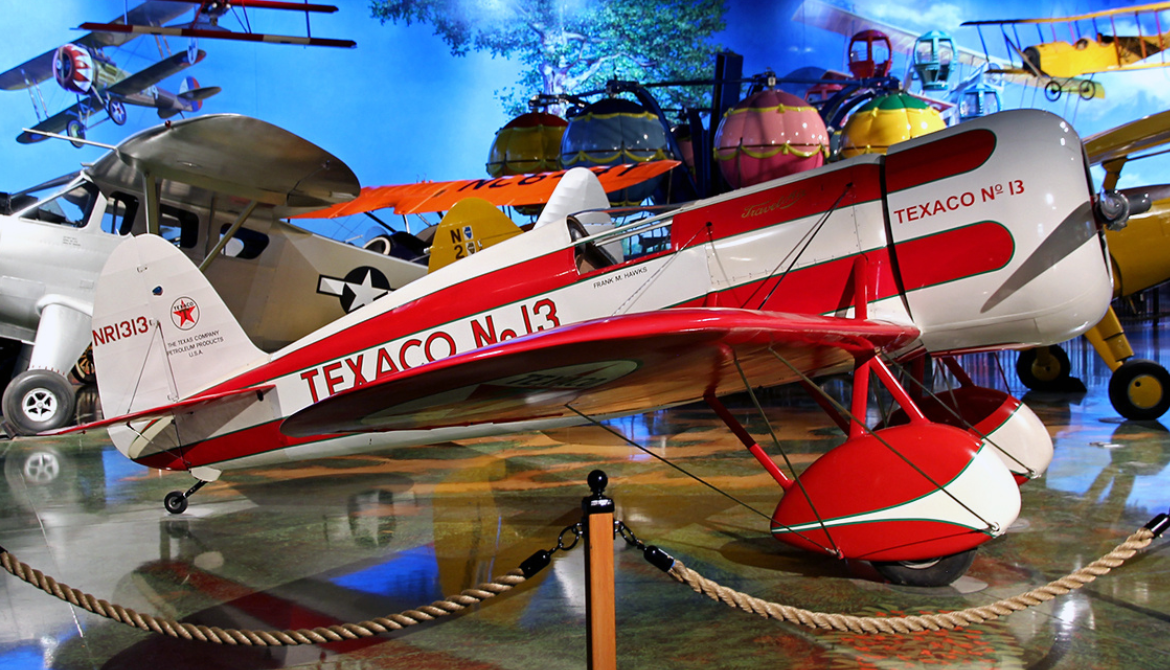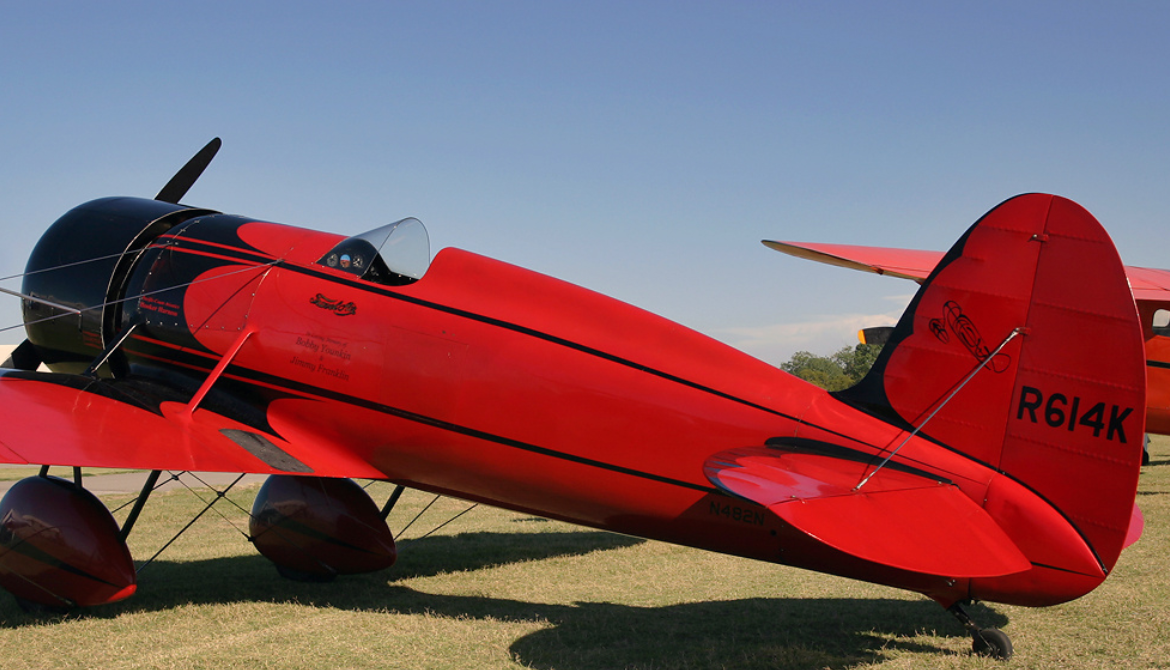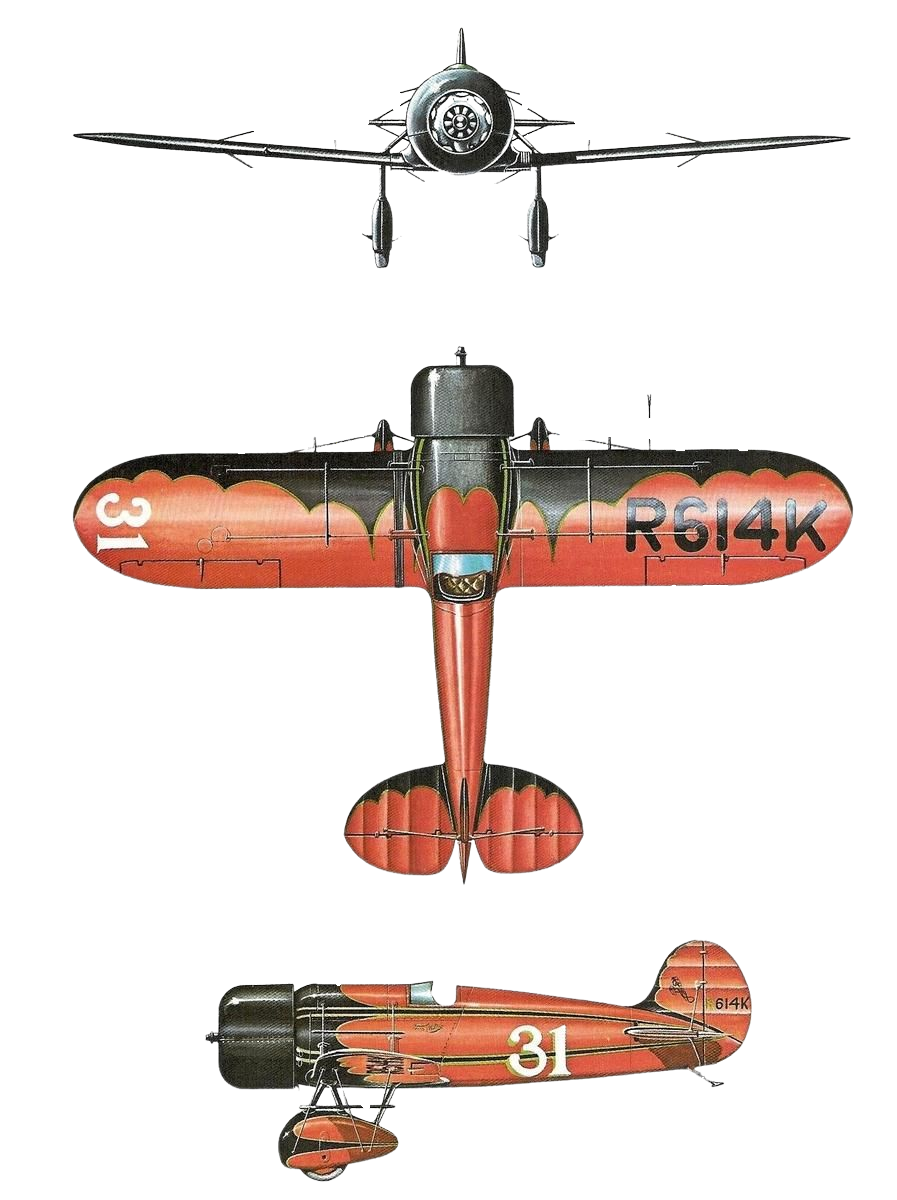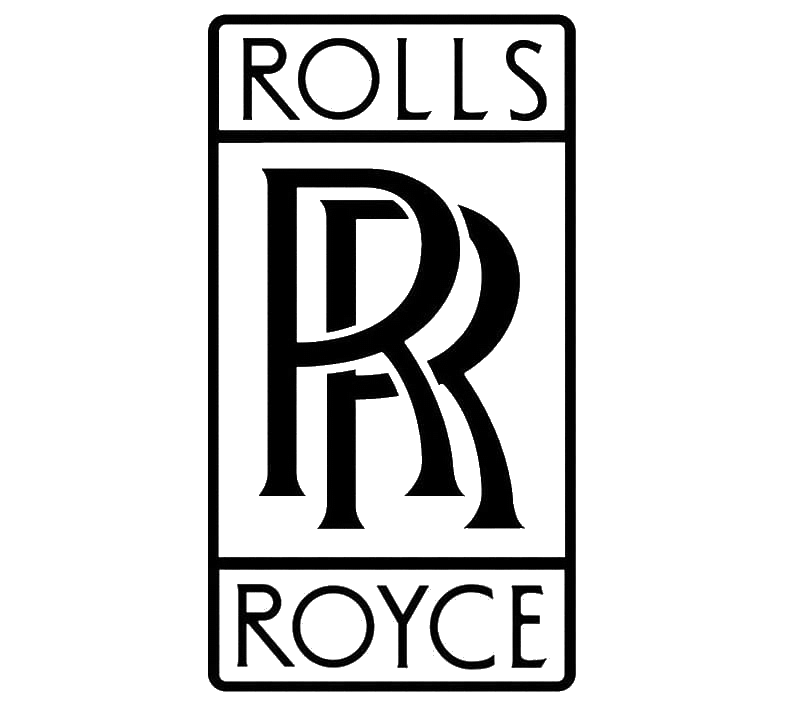.
History Travel Air
Type R Mystery Ship

The Type R "Mystery Ships" were a series of wire-braced, low-wing racing airplanes built by the Travel Air company in the late 1920s and early 1930s. They were so called because the first three aircraft of the series (R614K, R613K, B11D) were built entirely in secrecy.
In total, five Type Rs were built and flown by some of the most notable flyers of the day, including Jimmy Doolittle, Doug Davis, Frank Hawks, and Pancho Barnes, not only in races but also at air shows across the United States, and most notably, by Hawks in Europe.
The Type R "Mystery Ships" were a series of wire-braced, low-wing racing airplanes built by the Travel Air company in the late 1920s and early 1930s. They were so called because the first three aircraft of the series (R614K, R613K, B11D) were built entirely in secrecy.
In total, five Type Rs were built and flown by some of the most notable flyers of the day, including Jimmy Doolittle, Doug Davis, Frank Hawks, and Pancho Barnes, not only in races but also at air shows across the United States, and most notably, by Hawks in Europe.
Design and development
The environment in air racing at the time was one of give and take with the military. A civilian designer would take an existing aircraft design, modify it for greater speed and enter it in the race. Since the military already had access to the fastest and most advanced aircraft available, it was simply a matter of upping the horsepower on whatever aircraft they were using and the problem was solved. This led to the military completely dominating the air racing scene. In an effort to combat this, two Travel Air designers; Herb Rawdon and Walter Burnham undertook proving that a civilian aircraft built from scratch and designed exclusively for racing (as opposed to combat or passenger/mail service) could out-fly the military.
Under construction during 1928, the aircraft was kept under cover prior to the 1929 Cleveland Air Races, with the builders even going so far as painting the windows on the factory to keep the curious press from getting a look at it. The local Wichita paper picked up on the secret program, with one reporter even going so far as to scale a ladder to try to peek into the vents in the factory roof. The paper dubbed it the "Mystery Ship" and the name stuck with R (for Rawdon) added.[Rawdon and Burnham both knew that to approach Travel Air CEO Walter Beech would be fruitless, unless they hit him with the idea just before the air racing season began, so they designed the aircraft in their spare time, without pay until they could get Beech to agree to build the type.
During an era when biplanes were still common, the use of a monoplane planform, a NACA engine cowl, and large wheel pants significantly reduced aerodynamic drag, creating a streamlined design. Construction of the fuselage and wings was based on a plywood structure with the thin wings braced with wires. The sleek, polished fuselage continued the shape and width of the cowl throughout, with the cockpit featuring a small windshield, set nearly flush with the skin. A turtle deck extended from the cockpit to the vertical tail creating a fairing for the helmeted head of the pilot.

0
KmCeiling
0
KmCombat RANGE
0
Km/hAircraft Speed
0
Max Crew
Photo Gallery
Travel Air
Type R Mystery Ship


Travel Air Type R Mystery Ship
General Info
-
-
- Crew: One pilot
- Length: 20 ft 2 in (6.15 m)
- Wingspan: 27 ft 8 in or 29 ft 2 in (8.43 or 8.89 m)
- Height: 7 ft 9 in (2.36 m)
- Empty weight: 1,475 lb (669.05 kg)
- Gross weight: 1,940 lb (879.97 kg)
-
Performance
- Maximum speed: 235 mph (394.29 km/h, 204 kn)
Races
- The Model R series set numerous speed records for both pylon racing and cross-country flying, and were the most advanced aircraft of the day, by far outpacing anything that even the military could offer. On September 2, 1929, Doug Davis entered the "Mystery Ship" in the Thompson Cup Race
.
Links to Youtube & Others
The Model R series set numerous speed records for both pylon racing and cross-country flying, and were the most advanced aircraft of the day, by far outpacing anything that even the military could offer.
Travel Air
Type R Mystery Ship
This was the first time in the history of air racing that a civilian racer had outperformed a military aircraft

Youtube Link
Learn all about the Aermacchi MB-339 with Curator of Aviation Eric Boehm.
